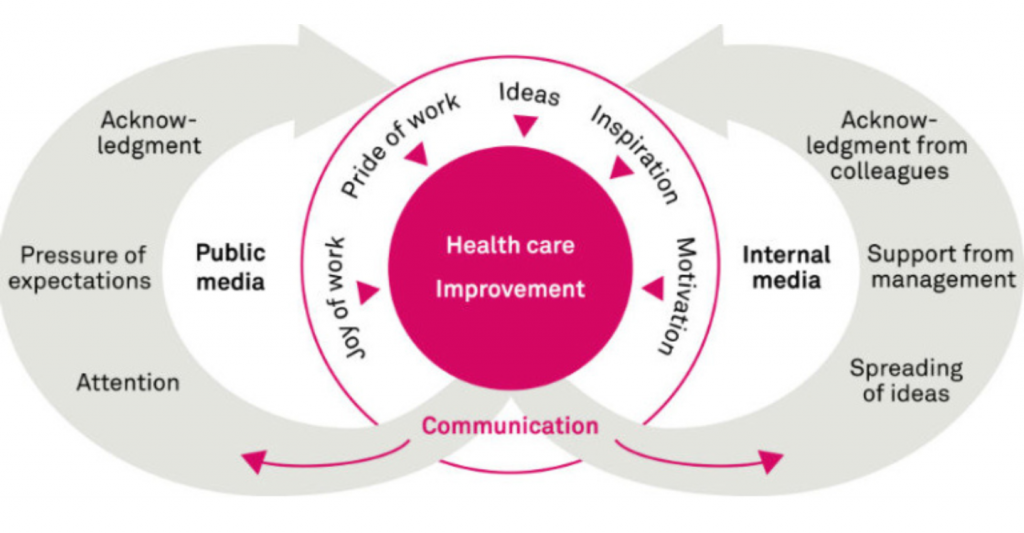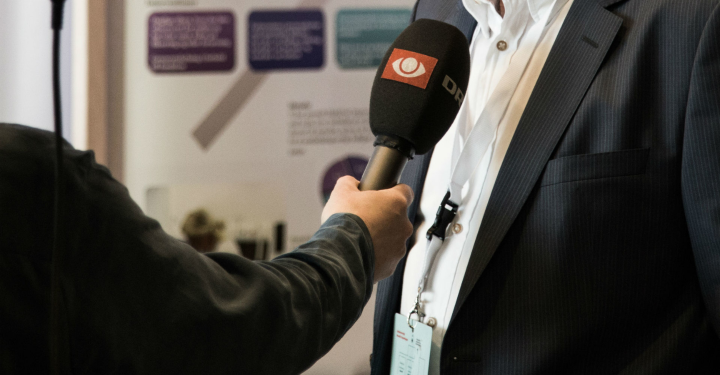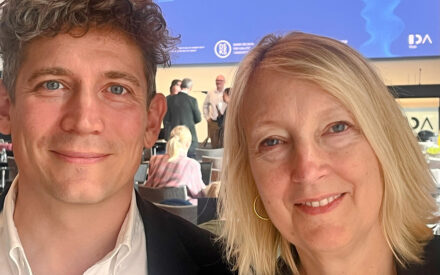If you are a healthcare professional you might think that journalists and communications people are strange or even scary, and that contact with the media is awkward and not part of your job.
But actually the media can be a very useful and effective tool if you are working with improvement and patient safety. Communicating stories, data, results, ambitions, successes – and failures can create effects, acting as powerful drivers of improvement. Communications, both internally in the organisation and externally towards the media and the general public, can be used strategically to generate attention, focus, and will for change.
As a journalist and communication person myself I have been working with improvement programs in the Danish healthcare during the last decade. As part of an active communication strategy in the Danish improvement programs, I have encouraged leaders, program managers and improvement teams in hospitals and in the primary care to go public with their aims and results. This could be a hospital CEO presenting in the national news the ambition of achieving zero pressure ulcers in the whole hospital within a year. It could be an improvement team from a nursing home getting mentioned in the local newspaper for achieving a hundred days without medication errors. Or it could be a news article on the hospital intranet about the intensive care staff celebrating 300 days without central line infections.
And even if there has been a certain resistance to the idea of contacting “the press”, and even if it is sometimes inconvenient to host journalist – a television-crew can turn an entire ward upside-down for a whole day – overall it has produced positive experiences.
Blog-authors are improvement advisors, employed at or working with the Danish Society for Patient Safety.
The pupose of the blog is sharing knowledge and experiences and maintaning a dialog about improvement work.
Blog are personal and does not necessarily reflect the positions of the Danish Society for Patient Safety
Forbedringsbloggen handler om forbedringsarbejde i sundhedsvæsenet.
Indlæggene skrives af forbedringsagenter, der er ansat hos eller samarbejder med Dansk Selskab for Patientsikkerhed.
Formålet med bloggen er at dele erfaringer med og fremme dialog om forbedringsarbejdet.
Bloggen er personlig og repræsenterer ikke nødvendigvis Dansk Selskab for Patientsikkerheds holdninger.
Recognising the improvement effort
A survey among nurses, doctors and quality managers in the Danish Safer Hospital Programme showed that positive media coverage is perceived by staff as recognition of their efforts, thereby stimulating their motivation and commitment. The survey was repeated in the In Safe Hands program in the primary care sector with the same result.
Media coverage enhances professional pride
But actually you don’t have to call a tv-station or a newspaper to achieve this effect. The participants in the survey were asked to rate, what media they would prefer to be mentioned in, if they could choose. Internal media, like the hospital intranet, the municipal newsletter and the staff magazine came in high on the list. Also, mention in professional media, like a nurses magazine, was rated high. It seems that the attention of your colleagues, your peers and your managers is an important factor.
Therefore, if you decide to test out the power of the media, it might be a good idea to start with calling the local communication team in your organization. They can help you find out how best to start. Even if you decide to try the public media, it is probably a good idea to get advice from your local communication people. Also many organisations have a communication policy, that you have to align with.
Going naked
Presenting success is one way of using the media, another way – that takes even more courage – is going public with your data before you are proud of it. In 2011, Jim Reinertsen, who is an experienced hospital CEO and a former senior fellow at the Institute for Healthcare Improvement in USA, conducted a seminar among Danish hospital CEO’s as a part of The Danish Safer Hospital Programme. This seminar was an eye-opener and a change point for hospital managers, and for me as a communication advisor.
Among many other points, Jim Reinertsen presented the concept of transparency as an extraordinarily important force for improvement. Transparency means “going naked” with your data. It means showing the current status, even if it is less than perfect.
On an organizational level transparency means full openness – also in public – about clinical outcomes, complications, adverse events, and service deficiencies, as well as openness about the goals for which the organisation strives. This openness sends a signal that the organisation takes problems seriously and is working to generate improvements. At the same time, a pressure of expectations on the organization from the outside is created, that contributes further to a dynamic improvement work.
Go outside to get inside
Even though transparency is primarily a leadership tool, the same mechanisms can be exploited locally by the single improvement team. Presenting your current status, and at the same time presenting the aim you are striving for, puts a pressure of expectation on the improvement effort and helps to accelerate the progress. If you have stated that you want to eliminate pressure ulcers before New Year, you have better put those words into action.
When you use the media to present your results and successes, or to practice transparency, the purpose is not only to disseminate knowledge. You communicate to create a range of effects that work back into your organization, your ward, your team.
As Jim Reinertsen says about transparency – and I think that is to a great extend true of all communication for improvement: Your audience is internal. You go outside to get inside!
Go outside to get inside

Charlotte Frendved. Journalist, MD, medical writer and editor, Danish Society for Patient Safety. Medical journalist since 1989. 10 years of experience with communications and media-strategy in Danish healthcare improvement programmes. Writer/editor of several publications about improvement work and methodology, and responsible for the content of the healthcare professional element of the www.patientsikkerhed.dk website. Danish improvement advisor education.




